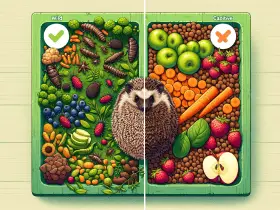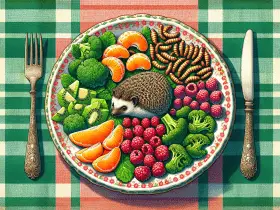We all know how challenging it can be to manage our diets and maintain healthy portion sizes. But fear not, because in this article, we’re going to show you the power of using the right food containers for portion control.
By understanding serving sizes and measuring our portions accurately, we can achieve weight loss goals, maintain a healthy diet, and even support muscle building.
Whether you follow a specific diet or just want some tips and tricks for successful portion control, we’ve got you covered. Let’s embark on this journey together!
Key Takeaways
- Portion control is essential for maintaining a healthy lifestyle, regulating caloric intake, and managing weight.
- Using smaller plates and bowls can trick the mind into thinking you’re eating more and lead to consuming fewer calories.
- Select containers made from high-quality materials like glass or BPA-free plastic for durability and easy cleaning.
- Portion estimation techniques, such as visual aids, measuring tools, and portion control apps, can help ensure precision in portion control.
The Importance of Portion Control
You need to understand the importance of portion control and how it can help you manage your diet effectively.
Portion control is a key aspect of maintaining a healthy lifestyle. By keeping an eye on the amount of food we consume, we can ensure that we are not overeating or undernourishing our bodies.
One of the main benefits of portion control is weight management. When we eat larger portions than our body needs, we end up consuming more calories than necessary. This can lead to weight gain and even obesity. On the other hand, when we practice portion control, we are able to regulate our caloric intake and maintain a healthy weight.
Another benefit of portion control is better digestion. Eating large portions puts stress on our digestive system, leading to discomfort and indigestion. By eating smaller portions, we allow our digestive system to work efficiently without feeling overwhelmed.
To practice portion control effectively, here are some tips: use smaller plates and bowls to visually trick your brain into thinking you’re eating more; measure out serving sizes using measuring cups or a food scale; avoid eating directly from containers as it’s easy to lose track of how much you’ve consumed.
Choosing the Right Food Containers
When it comes to selecting the correct containers for your meals, make sure they are suitable for portioning your food. The choice of container material plays a crucial role in maintaining the quality and freshness of your meals. Opt for containers made from high-quality materials such as glass or BPA-free plastic.
Glass containers are durable, easy to clean, and do not absorb odors or stains. On the other hand, BPA-free plastic containers are lightweight and portable.
Meal prep strategies also play a significant role in choosing the right food containers. If you prefer prepping your meals ahead of time, consider investing in stackable and compartmentalized containers. These will help keep different components of your meal separate while making it easy to store multiple portions efficiently.
Additionally, consider the size and capacity of your food containers. Portion control is essential when trying to manage your diet effectively. Look for containers that allow you to measure and portion out specific serving sizes accurately.
Understanding Serving Sizes
When it comes to understanding serving sizes, there are three key points to consider: portion estimation techniques, visual aids for servings, and the importance of measuring tools.
First, portion estimation techniques can help us gauge how much food we should be consuming. This includes methods such as using our hand or comparing portions to common household items.
Second, visual aids for servings can be incredibly helpful in visually representing appropriate portion sizes. These can include diagrams or photographs that show what a recommended serving looks like.
Lastly, the use of measuring tools is crucial in accurately determining serving sizes. Whether it’s a scale for weighing ingredients or measuring cups and spoons for liquids and solids, having the right tools ensures precision in our portion control efforts.
Portion Estimation Techniques
To accurately estimate portion sizes, it’s helpful to use measuring cups or a food scale. Here are three effective techniques for portion estimation:
Hand Measurements: Use your hand as a guide. For example, one serving of protein is about the size of your palm, while a serving of grains is about the size of your fist.
Visual References: Compare portions to everyday objects. A serving of cheese should be similar in size to four dice, and a tablespoon of peanut butter should be around the size of a golf ball.
Portion Control Apps: Utilize technology to track and manage your portions. There are numerous apps available that provide guidance on proper portion sizes and help monitor your intake throughout the day.
Visual Aids for Servings
By comparing portions to everyday objects, you can easily visualize the appropriate serving size. Visual aids are powerful tools that help us understand and control our portion sizes more effectively.
For example, a deck of cards is about the size of a 3-ounce serving of meat or chicken. A tennis ball represents a single serving of fruit or vegetables, while a small fist is equivalent to one cup of pasta or rice.
These visual references provide tangible measurements that make it easier to estimate portions accurately. Using these visual aids, we can avoid overeating and maintain a healthy diet.
When we have a clear understanding of portion sizes, we can make better choices about what and how much we eat, leading to improved health and overall well-being.
Importance of Measuring Tools
You can accurately measure your ingredients and portions with the help of measuring tools like a scale or measuring cups. Here are three reasons why measuring tools are important for portion control:
Precision: Measuring tools ensure accuracy in portion sizes, helping you stick to recommended serving sizes and avoid overeating. This is crucial for maintaining a healthy weight and managing calorie intake.
Consistency: Using measuring tools allows you to consistently portion your food, which helps create a routine and establish healthier eating habits. It also helps in tracking your progress and making adjustments if necessary.
Nutritional balance: Measuring tools enable you to balance your macronutrients (proteins, carbohydrates, fats) effectively. By accurately measuring ingredients, you can ensure that your meals contain the right amount of nutrients for optimal health.
Measuring Your Portions
Make sure you’re using the correct food containers to measure your portions accurately.
Portion control is crucial for maintaining a healthy diet and managing weight. By being mindful of the amount we eat, we can prevent overeating and promote better health outcomes.
Here are some portion control tips to help you on your journey towards a healthier lifestyle.
Firstly, invest in measuring tools such as food scales, measuring cups, and spoons. These tools provide precise measurements and ensure consistency in portion sizes. Additionally, using smaller plates and bowls can trick our minds into thinking we have eaten more than we actually have.
Another useful tip is to pre-portion snacks into individual servings. This prevents mindless eating and helps us stick to appropriate portion sizes. Snack containers with dividers or single-serving bags are great options for this purpose.
Furthermore, it’s essential to be aware of recommended serving sizes for different types of foods. The USDA provides a comprehensive database that outlines standard serving sizes for various food groups. Familiarizing yourself with these guidelines will enable you to make informed choices about portion control.
Portion Control for Weight Loss
When it comes to portion control for weight loss, there are several key points to consider.
First, the impact of container size on our food consumption is significant. Understanding portion control techniques and implementing them in our daily routine can make a big difference in managing our weight.
Lastly, there are numerous benefits to practicing portion control, such as improved digestion, better blood sugar control, and increased chances of reaching our weight loss goals.
Container Size Impact
By using smaller food containers, it’s easier to control portion sizes and manage your diet effectively. The size of our food containers has a significant impact on our eating habits and overall health.
Here are three important benefits of using smaller containers for portion control:
Mindful Eating: Smaller containers help us become more aware of the amount of food we consume. When we see a full container, it tricks our brain into feeling satisfied with less. This prompts us to eat smaller portions and avoid overeating.
Calorie Control: Larger containers can lead to mindless eating and consuming excess calories. By using smaller containers, we automatically limit the amount of food we serve ourselves, helping us stay within our calorie goals.
Weight Management: Research shows that people who use smaller plates or bowls tend to consume fewer calories without feeling deprived. This simple switch in container size can support weight loss efforts and promote healthier eating habits.
Portion Control Techniques
One effective way to manage the amount of food we eat is by being mindful of our portion sizes. Portion control techniques are essential for maintaining a healthy weight and promoting weight loss.
By controlling our portion sizes, we can avoid overeating and consuming excessive calories. One technique is using smaller plates and bowls, which can trick our minds into thinking that we are eating more than we actually are.
Another technique is measuring our food with measuring cups or a kitchen scale to ensure accurate portion sizes. Additionally, practicing mindful eating can help us pay attention to hunger cues and prevent mindless snacking.
Benefits of Portion Control?
Practicing portion control techniques can lead to several benefits. Here are three key benefits of portion control:
Weight Management: Portion control helps us manage our calorie intake, which is crucial for maintaining a healthy weight. By controlling the amount of food we consume, we can ensure that we are not overeating and consuming excess calories. This can help prevent weight gain and even aid in weight loss.
Improved Nutritional Intake: When practicing portion control, we become more mindful of the types of foods we are consuming. This encourages us to choose nutrient-dense foods that provide essential vitamins, minerals, and antioxidants necessary for optimal health.
Reduced Risk of Chronic Diseases: Overeating and poor portion control have been linked to an increased risk of chronic diseases such as obesity, diabetes, heart disease, and certain types of cancer. By practicing portion control, we can reduce our risk factors for these diseases and improve overall health.
To achieve success with portion control, consider these tips:
- Use smaller plates or containers to visually trick your brain into thinking you’re eating more.
- Measure out servings using measuring cups or a food scale.
- Be mindful of hunger cues and stop eating when you feel satisfied rather than full.
Portion Control for Maintenance
To maintain portion control, you should use the right food containers for your diet management. Portion control is an essential aspect of maintaining a healthy lifestyle and managing weight. By using appropriate food containers, you can ensure that you are consuming the right amount of food without overeating.
Here are some portion control tips and strategies that can help you stay on track:
Use smaller plates and bowls: Research shows that people tend to eat more when they use larger plates or bowls. By using smaller ones, you can trick your brain into thinking that you’re eating more than you actually are.
Pre-portion your meals: Take some time to pre-portion your meals into individual containers or zip-lock bags. This will make it easier for you to grab a single serving instead of mindlessly eating from a large package.
Invest in portion control containers: There are various types of portion control containers available in the market that can help you measure out the right amounts of protein, carbohydrates, and fats for each meal.
Read nutrition labels: Pay attention to serving sizes listed on nutrition labels and try to stick to them as closely as possible.
Portion Control for Muscle Building
By incorporating smaller plates and pre-portioned meals, we can effectively build muscle while maintaining a healthy lifestyle. Portion control plays a crucial role in both weight gain and athletic performance.
Here are three key reasons why portion control is essential for muscle building:
Calorie management: Controlling portion sizes allows us to regulate our calorie intake, which is crucial for weight gain. Consuming excess calories without proper portion control can lead to unwanted fat gain instead of lean muscle development.
Nutrient balance: When we focus on portion control, we can ensure that our meals contain the right balance of macronutrients – proteins, carbohydrates, and fats – needed for optimal muscle growth. This helps fuel intense workouts and aids in post-workout recovery.
Consistency: By practicing portion control consistently, we create a habit that supports our fitness goals. It allows us to track our progress accurately and make necessary adjustments if needed.
Incorporating smaller plates and pre-portioned meals not only helps with weight management but also ensures that we are providing our bodies with the right nutrients for muscle building.
Portion Control for Specific Diets (e.g., Keto, Vegan
Now that we’ve explored portion control for muscle building, let’s dive into the world of specific diets and how portion control plays a crucial role.
Whether you’re following the keto or vegan diet, understanding proper portion sizes is essential for achieving your health and wellness goals.
When it comes to keto portion control, it’s important to focus on consuming adequate amounts of healthy fats, moderate protein, and minimal carbohydrates. Using food containers specifically designed for the keto diet can help you measure and control your macronutrient intake accurately. These containers are color-coded, making it easy to allocate the right amount of each food group.
For those following a vegan lifestyle, portion control is equally important. Incorporating a wide variety of plant-based foods ensures you receive all the necessary nutrients while maintaining appropriate calorie intake. Vegan-specific food containers can assist in measuring your portions of fruits, vegetables, grains, legumes, and plant-based proteins.
By practicing portion control within the context of these diets, you can maintain better blood sugar levels (for keto) or ensure balanced nutrient consumption (for vegans).
Remember that everyone’s needs may vary based on individual factors such as age, activity level, and overall health status. Consulting with a registered dietitian can provide personalized guidance in terms of recommended portion sizes for your specific dietary requirements.
Tips and Tricks for Successful Portion Control
Remember, it’s all about finding what works best for you and incorporating small changes into your daily routine to maintain successful portion control. Here are three tried and true portion control tricks that can help you stay on track with your healthy eating goals:
Use smaller plates: Research has shown that people tend to eat more when they are presented with larger plates or bowls. By simply switching to smaller dinnerware, you can trick your brain into thinking you’re eating more than you actually are. This can be a simple yet effective way to reduce your portion sizes without feeling deprived.
Measure out servings: It’s easy to underestimate how much we’re actually eating, especially when it comes to calorie-dense foods like nuts or pasta. Using measuring cups or a food scale can help you accurately portion out the right amount of food. This allows you to enjoy your favorite dishes while still keeping an eye on portions.
Fill half your plate with veggies: Vegetables are low in calories and high in nutrients, making them the perfect addition to any meal. By filling half of your plate with vegetables, you automatically reduce the space available for higher-calorie foods. This not only helps with portion control but also ensures that you’re getting a good balance of nutrients.
Incorporating these portion control strategies into your daily routine can make a big difference in managing your weight and overall health. Remember, it’s all about finding what works best for YOU and making small changes over time for long-term success!
Frequently Asked Questions
Can Portion Control Help With Weight Loss?
Portion control can be effective for weight loss. It helps us manage our food intake and ensures we eat the right amount. Studies show that portion control can lead to significant weight loss benefits.
How Can I Measure My Portions Accurately?
Want to measure portions accurately? We’ve got you covered! Use these foolproof portion control techniques for measuring accuracy. With the right tools, like food containers, you’ll be on track to a healthier lifestyle in no time!
Are There Specific Food Containers That Are Better for Portion Control?
There are alternative portion control tools that can help with mindful eating. Using the right food containers can make it easier to manage portion sizes and stay on track with your diet goals.
Can Portion Control Be Helpful for Maintaining Weight After Reaching a Weight Loss Goal?
Portion control can be helpful for weight maintenance after reaching a goal. By using smaller food containers and measuring tools, we can stay mindful of portion sizes and avoid overeating. These tips promote healthier habits and long-term success.
Are There Any Specific Portion Control Strategies for Individuals Following a Keto or Vegan Diet?
For individuals following a keto or vegan diet, specific portion control strategies can be helpful. By measuring and using the right food containers, we can ensure that we are consuming the appropriate amounts of nutrients for our dietary needs.
Conclusion
In conclusion, portion control is a crucial aspect of managing our diet effectively. By using the right food containers and understanding serving sizes, we can ensure that we are eating the appropriate amount of food for our goals, whether it’s weight loss, maintenance, or muscle building.
While some may argue that portion control limits their freedom to eat as much as they want, it actually empowers us to make healthier choices and achieve our desired outcomes.
So let’s embrace portion control and take control of our health!




















Leave a Reply
View Comments